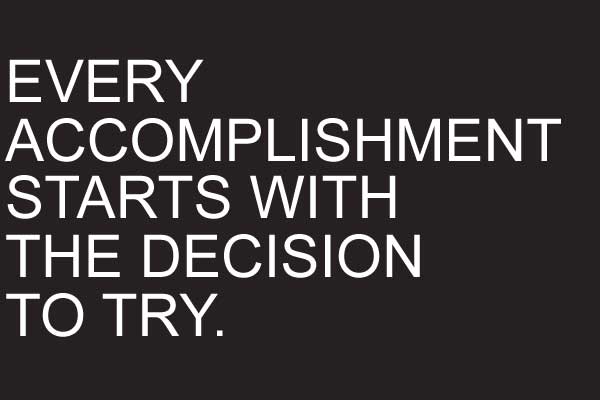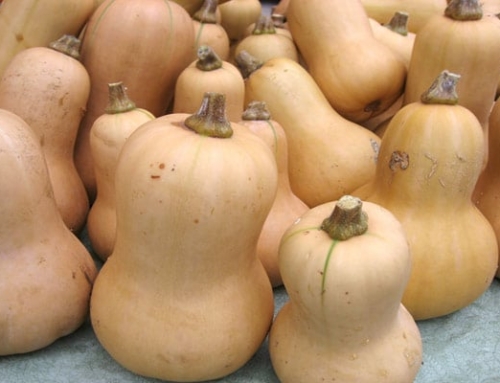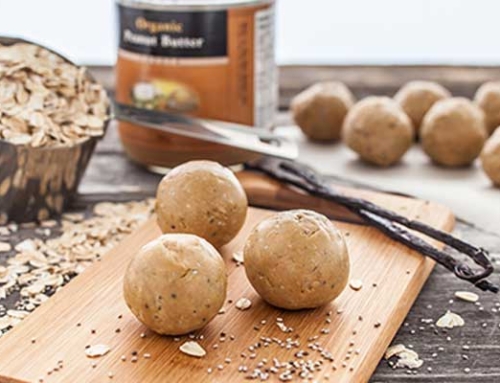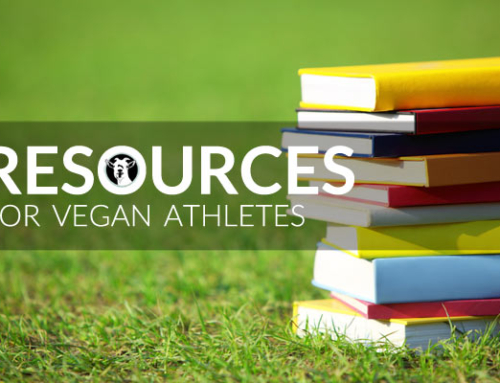How to Become a Vegan Athlete – 10 Tips to Get Started
Disclosure: This post may contain affiliate links
Are you ready to take control of your fitness and start an active lifestyle? Are you currently an athlete that's curious about how a vegan diet can help you out-perform your competition? This is for you.

What's in this post
By Anne-Marie Campbell, Guest Contributor
Being an athlete is one of the most fulfilling things I do, and if you’re thinking of getting started I highly recommend it! Ever since I was 9 years old, competing in gymnastics, I’ve absolutely loved athletics. Being an athlete sets you on a personal journey of self-improvement, conquering your fears, exceeding your limitations, and adopting the habit of a healthy, active lifestyle.
Here are 10 tips to get you started!
1. Start the Ditch and Switch
Set yourself up with the foods that will help you thrive as a vegan athlete! It starts with the choices you make at the grocery store. You will need to replace meat, dairy, and eggs with healthy, plant-based whole foods. Start by ditching dairy milk for almond or soy milk (aim for unsweetened and organic). Then, ditch meat and eggs and replace them with other high protein foods like quinoa, lentils, tofu, and tempeh, to name just a few. Another excellent way to make a smooth switch is to veganize your current go-to meals! Enjoy the process of trying new foods and products. It’s all about perspective, so go into the switch with a positive mindset. Focus on what you can have, and not what you want to avoid. Aim to eat a wide variety of colors, and this will help ensure you’re getting a diverse range of nutrients!
2. Performance vs. Dieting
As an athlete, your focus should be on performance and muscle recovery. That requires listening to your body, and eating enough to fuel your activity and replenish your muscles afterwards. If you’re too concerned with counting calories, or “dieting” for weight loss, you may end up depriving your body of much needed nutrients. Being an athlete can be very physically demanding on your body. Without the proper nutrition and caloric intake, you may lack energy during activity, and have slow muscle recovery. It’s common to find new vegan athletes concerned about their lack of energy or always feeling hungry. That is almost always directly related to them simply not eating enough. Our bodies naturally thrive on healthy plant-based whole foods, and since many of them are low in calories, you may need to eat more to fuel your active body. As a competitive vegan athlete myself, I know that if I don’t give my body the fuel it needs, I simply won’t perform as well. If I were to be too concerned with how many calories or carbs are in my food, I’d compromise my energy and strength.
If you want to thrive as an athlete, performance should be your priority. Remember, muscle weighs more than fat, so the scale isn’t necessarily the best way for an athlete to measure their ideal weight! If an athlete fuels themselves with healthy, plant-based whole foods, they will increase their muscle and boost their metabolism, making it easier for them to maintain their ideal weight. Listening to your body is truly the key! Tune into the signals your body gives you and you’ll learn how much fuel your body needs, and when. For me, I get my best performance when I eat a meal 2-3 hours before training.
3. Protein Sources for Vegan Athletes
The most common question you’ll be asked when someone finds out that you’re vegan is “Where do you get your protein?” Especially as an athlete, they will be even more curious as to how you build muscle and strength. Luckily, finding quality plant-based protein is easy, and you’ll have plenty of variety to keep your muscles fueled and satisfied.
There are 20 amino acids that link together to form protein. Our bodies naturally produce 11 amino acids from chemicals already found in our body (called non-essential amino acids). The remaining 9 amino acids need to be consumed, since our bodies don’t naturally produce them (called essential amino acids).
High vegan protein foods are:
- Tofu*
- Edamame*
- Tempeh*
- Quinoa*
- Seitan
- Lentils
- Black Beans
- Kidney Beans
- Chickpeas
- Brown Rice
- Oatmeal
- Whole Grains
- Buckwheat*
- Amaranth*
- Almonds
- Cashews
- Green Peas
- Amaranth*
- Almonds
- Cashews
- Green Peas
- Leafy Greens
- Chia Seeds*
- Hemp Seeds*
- Flax Seeds
- Bean Sprouts
- Nutritional Yeast
- Spirulina*
- Unsweetened Organic Soy Milk*
* food options that have all 9 essential amino acids
Vegan Protein Powders such as Vega, Sunwarrior, Garden of Life Raw Protein, PlantFusion, to name a few. Great for convenience, but definitely not required to meet your protein needs.
All of the foods listed are excellent, healthy, high protein sources for vegans! For the foods that don’t contain all 9 essential amino acids, don’t worry! You don’t have to eat them in a special combination at the same time for them to be “complete” or absorb better. Eating a variety of foods throughout the day is just as readily absorbed in the body. It would honestly be very hard to find someone who is protein deficient because protein is found everywhere, from veggies to grains.
A general guideline is to take in 0.8 grams of protein for every kilogram we weigh (that’s roughly 0.36 grams of protein per pound). However, as an athlete, you’ll most likely require more protein than someone who lives a sedentary lifestyle, simply because your body demands more of your muscles through activity, training, and recovery. In general, you may want to aim closer to 1.3 – 1.8 grams of protein for every kilogram you weigh, to match your active lifestyle.
Did You Know?
4. Research Gyms/Leagues before Joining
This is really important, but often overlooked. Taking the time to research will only help you in the long run. If a gym has a trial offer, where you can give it try for a certain amount of days or classes for free, I highly recommend that you do it! It’s one of the best ways to test out the experience without the commitment of a full membership.
Things to consider:
- Schedule – it can be a great place, but be realistic about the demands of your other commitments and choose a place with a schedule that you can truly commit to, and that fits in well with your work/life.
- Reputation – search online for reviews to see what people are saying about their experience there. Check out their website to see what their mission is, and if it seems to shine through in their voice on their social pages.
- Quality of the Facilities – make sure their equipment and facilities are well kept, maintained, clean, and will allow you to train in a safe environment.
- Qualifications of the Coaches/Teachers/Staff – make sure the people who will be training or coaching you are qualified, and have the proper health and safety credentials.
- Cost – find something within your budget, and take advantage of any new member discounts or promotions. Make sure their payment plans are flexible to match your needs. If it’s a good place, they will try to help you at your budget level, and not push you into a commitment that’s not realistic for your situation.
- Are They Vegan Friendly? – this is something to be aware of, especially for Cross-Fit, where the Paleo diet is commonly promoted. Also, if you’re looking for a personal trainer, ensure that they are knowledgeable and supportive of the vegan lifestyle. You shouldn’t feel like you have to constantly defend your lifestyle choice while you’re trying to focus on reaching your fitness or athletic goals.
5. Get Inspired

Find people who inspire you! Surround yourself with people with positive attitudes, and who help spark your passion to be the best athlete you can be! Social media is such a great way to find inspiring people. Search for people who genuinely promote a healthy, active, vegan lifestyle, and then connect with like-minded people. You’ll see that the vegan health and fitness community is really supportive, and such an excellent source of help for those who might not know many active vegans offline.
6. Make Meal Prep a Priority
Meal preparation is a great way to ensure your food is ready when you need it, and has all the nutrients you’ll need to fuel your activity and muscle recovery. It’s a tool to help ensure your success, because without it, you may miss out on healthy, well-balanced meals when you’re in a rush, or have a busy schedule. Planning ahead and prepping your own meals is also a great way to save money!
7. Fuel up for your Best Performance
Over my 20+ years as a competitive athlete, I’ve tried many different pre-activity meals, always seeking the best foods that would provide me with the most energy. Only when I became vegan did I finally find the foods that gave me the energy I’ve been searching for all those years!
It’s going to be trial and error for each individual person, but I’ll share my go-to foods as a starting point for your journey. The first thing to consider is the timing of your meal before training. I aim to eat 2-3 hours before training.
My go-to meals are super simple, and don’t have to be complicated to be effective!
- Beans, chickpeas, or lentils mixed with quinoa, and raw mushrooms, raw cucumbers, and raw spinach, tempeh (or organic tofu), with a balsamic drizzle. Sometimes I add a small amount of good fats, such as avocado.
- Brown rice, kidney beans, a variety of veggies (raw and/or steamed), tempeh or tofu, with nutritional yeast (great source of B12).
- In a rush, I’ve found that hummus with raw veggies are an excellent source of energy when strapped for time.
Choose: unprocessed whole foods, raw vegetables and fruits (such as cucumbers, mushrooms, spinach, bananas, watermelon, grapes, and oranges), chia seeds, flax seeds, quinoa, beans, lentils, brown rice, and tempeh.
Avoid: packaged, processed foods (including prepared plant-based meats or cheese, white bread or pasta, etc.) refined sugar, salty and fried foods.
Tip: Stay hydrated! Drink water, and lots of it! Stop drinking water approximately 30 minutes before strenuous training. Drink during activity, if needed, but I personally avoid drinking any water during the first 1 – 1 ½ hours of training, to avoid water log or stomach “stitches” (cramping) during intense sessions. This is why hydrating the night before and all day before training is key.
Pay close attention to how your body reacts to the foods you eat before training, and with some trial and error you’ll find your go-to pre-activity fuel!
8. Eat the Right Foods – Recover Faster and Build Muscle
The best time to eat for muscle recovery is 30-60 minutes after activity. During that time, your muscles are waiting to receive fuel and begin the repair process. Aim to eat at a 4:1 ratio, meaning that for every 4 grams of carbohydrates, there is 1 gram of protein. Foods that are easily digested are best during this recovery window, simply because the muscles can utilize the fuel more quickly. If you’re a fan of shakes, this is the best time to drink one, immediately after activity. Tofu is also quickly absorbed by the body, and contains both calcium and magnesium, which is lost through sweat during exercise.
When you sweat, you need to reload electrolytes, and your body becomes an acidic environment, so the best course of action is to replenish yourself with alkaline foods, such as leafy greens, kale, spinach, broccoli, peas, beets, lemons, watermelon, banana, pear, lemon, sweet potato, quinoa, tofu, chlorella, flax seed oil, and brown rice or wild rice.
9. Make it Routine – Stretching
Another important factor to muscle recovery, besides the food you eat, is the addition of stretching to your daily routine. Not only does stretching help improve flexibility and prevent injuries, it also assists in increasing circulation. Stretching before and after activity is vital for athletes of all levels! Check out the 5 Stretches You Should Add to Your Daily Routine to get started!
10. The Importance of Iron, and Where Vegan Athletes Get It
All athletes should be aware of their iron intake, vegan or not, because intense activity depletes the body of small amounts of iron. If your body is iron deficient, you will experience low energy, tiredness, low concentration, and a general lethargic feeling.
There are two types of iron; heme (animal-based) and non-heme (plant-based). Non-heme iron may be absorbed at a lower rate, so just eat iron-rich foods along with foods that contain Vitamin C, and this will boost your ability to absorb iron.
The approximate RDI intake of iron for active vegans is 18-33mg for women, and 11-14mg for men.
Vegan Sources of Iron:
- dark leafy greens
- quinoa
- tofu
- tempeh
- lentils
- beans
- pumpkin seeds – oatmeal
- grains
- molasses
- tomato sauce
- fortified cereals
- broccoli
Tip: Avoid drinking coffee or tea within an hour of your meal, as it can inhibit iron absorption.
Now that you’re ready to start your active lifestyle, it’s important to always remember who your competition is! The only person you should try to be better than is the person you were the day before. Whether you’re training for a race, a martial arts fight, or breaking a personal record at the gym, it’s always going to be your own personal journey to live. Keep the focus on being kind to yourself, setting goals, and pursuing your passion!
Be sure to check out the other articles in the vegan athlete series:
[/fusion_text]





Thanks a lot for sharing such a great piece of article! I found it a good helpful write-up with a good sound and explanation. Here I have seen some valuable ideas that are definitely helpful for every athlete. Please keep sharing more updates!
[…] searching for help I came across this site: How to Become a Vegan Athlete. This is something I will have to look at as time goes […]
[…] searching for help I came across this site: How to Become a Vegan Athlete. This is something I will have to look at as time goes […]
[…] https://www.yourdailyvegan.com/2015/03/how-to-become-a-vegan-athlete/ […]
Nutritional yeast has .5 microgram of B12 per 100 grams according to the USDA. It is not a good source for B12.
Hey, Bragg brand Nutritional Yeast has 40% B12 per 1 Tablespoon (5g).
It’s an excellent source of B12. You can check out the nutrition info at http://bragg.com/products/bragg-premium-nutritional-yeast-seasoning-salt-free.html